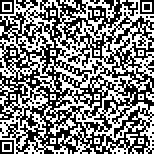下载中心
优秀审稿专家
优秀论文
相关链接
摘要

利用2001—04—26实用型模块化成像光谱仪(0MIS)在北京小汤山地区获取的航空高光谱遥感图像,对图像进行了精确的几何纠正和反射率转换,提取出43条小麦图像光谱与地面叶片全氮含量数据相对应,运用红边、光谱吸收特征分析方法和逐步回归算法,选择和设计了叶片全氮反演的特征波段和特征参数,并进行了全氮含量境图。实验结果表明:由吸收特征光谱(590-756nm,1096—1295nm,1295—1642nm)确定的特征深度与面积能够很好地对叶片全氮含量进行反演;NDVI(NRCA1175.8,NRCA733.9)和NDVI(dr745,dr699.2)与TN的关系最好(R^2分别为0.8145,0.769);全氮含量填图的值域和分布与地面调查和测量结果一致。
Accurate remotely sensed estimates of the chemical concentration of vegetation canopies provide a valuable aid to the understanding of ecosystem function and real-time agricultural decision-making. This is because many biochemical processes, such as photosynthesis, respiration and evapotranspiration are highly related to the biochemical concentrations such as chlorophyll, nitrogen, water and so on. Hyperspectral remote sensing images are providing an attractive way for biochemical estimates in a large scale promptly. In this study, investigation was designed to determine whether hyperspectral images of the airborne operative modular imaging spectrometer(OMIS)could be used to estimate foliar nitrogen concentration of wheat at a spatial resolution of 3m. OMIS image had 128 bands covering the V-TIR wavelength range, among which bands between 400nm and 2500nm accounting for 112 bands which were used in this paper. The images were acquired by the airborne OMIS in Xiaotangshan Area, Beijing, China, on April 26th, 2001 under a fairly clear weather. While the wheat leaves being sampled and measured foliar biochemistry, calibration was carried out synchronously. Red edge analysis and absorption feature analysis as well as stepwise regression analysis were utilized to determine the characteristic bands and parameters for the canopy-level nitrogen retrieval after accurate geometric correction and accurate image spectra rebuilt. The five concerned absorption features were centered around 675.8nm, 1175.8nm, 1409.1nm, 2078.2nm, 2295.1nm, which were selected according to the original image spectra shapes as well as some rational laboratory analysis results of dry materials. At last, the best estimation equation was applied to all the wheat pixels of the image so that a nitrogen concentration distribution map of wheat was obtained. As expected, the red edge slope(Srg)and area(Arg)could estimate the total foliar nitrogen(TN)fairly well(R 2=0.656, 0.643 respectively). The absorption depths and absorption areas of the three absorption features centered around 670nm, 1175nm and 1409nm were effective estimators of wheat foliar nitrogen concentration(R 2=0.7447, 0.7569 and 0.7073 respectively, n=43). The new developed spectral indices, NDVI(NRCA 1175.8, NRCA 733.9)and NDVI(dr745, dr699.2)were the best estimators of TN(R 2=0.8145 and 0.769 respectively). The values of the nitrogen concentration distribution map ranged from 1.8% to 6.5%, which was quite consistent with those of field measurements(2.8%-6.3%). The distribution agreed highly with the growth status distribution. Therefore to some extent, the estimation equation was validated. So it's possible, feasible and time-saving to estimate foliar nitrogen concentration at a large scale by using hyperspectral remote sensed images.

